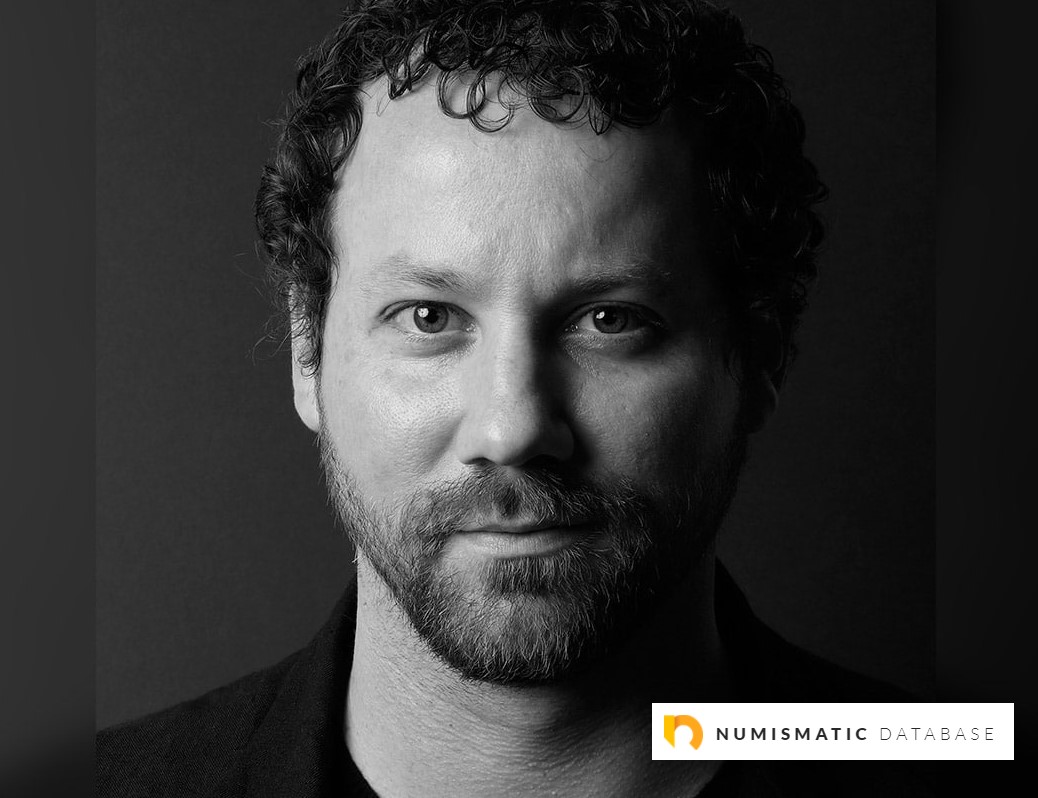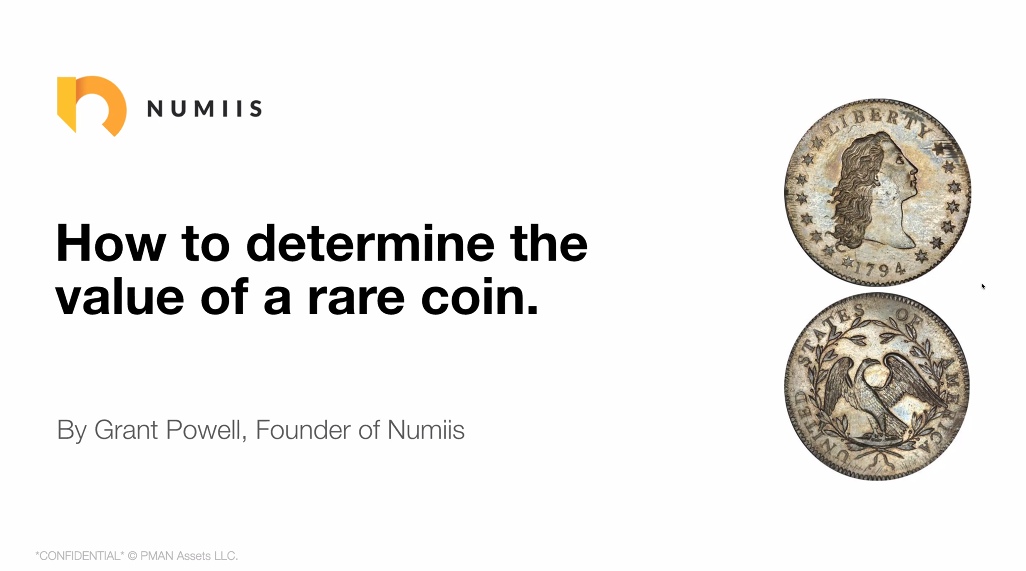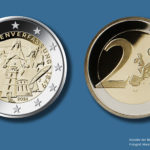
Expert’s word: GRANT POWELL – NUMIIS, modern tools for coins valuation
- October 19, 2020
- by
- Pierre

A few weeks ago, I participated in the NEWMAN Foundation’s internet seminar, offering an incredible variety of numismatic topics. This seminar was held over three full days with more than a dozen speakers. One of the interventions that particularly caught my attention was the one of GRANT POWELL from the company NUMIIS.
This company has developed an application using artificial intelligence (AI) to evaluate almost instantaneously the coins on which it is questioned.
NUMISMAG contacted GRANT in order to clarify its approach and the functioning of his application. We would like to thank him for his time.

GRANT POWELL, NUMIIS CEO and coins valuation expert
************
NUMISMAG: Grant, what is your background in the field of numismatics (university degree, professional experience, etc)?
GRANT POWELL: As a hobbyist, I’ve been collecting coins since a very young age, starting sometime around 8 years old. I was mentored by Frank Greco of Astoria Coins in New York for 4 years. As with most things in my life, I learned by failing – I bought coins that I thought would go up in value and did not, I bought coins that I thought would grade higher and did not. And after purchasing, grading and selling thousands of coins, I’ve been able to build an intelligence around coin quality and the properties that make a coin valuable or desirable.
NUMISMAG: Why did you develop a methodology to evaluate coins? Didn’t you find the right tools to do so?
GRANT POWELL: Great question. The short answer is no, there is no single, accurate source of coin pricing.
I found most published prices to be so inaccurate, that following their recommended pricing for buying/selling coins would lead to significant financial loss.
From what I’ve determined, none of the companies that publish price guides base their pricing on market values. Instead, their published values are merely opinions of what they think the coins SHOULD be worth versus what they are ACTUALLY selling for in the current market. This includes the values published by companies such as NGC, PCGS, The Red Book, and CDN Publishing (Greysheet), among others.
However, the data that is needed to accurately determine a coin’s value is available, but it is not quickly acquired and it is often deficient. This creates a problem – if there are many coins that you want to bid on at an auction, you will have to spend a lot of time researching historical data to determine what you should bid on those coins – that’s time most people don’t have.
So what inspired me to start Numiis, was a simple question: “How can I instantly get the current market value of any coin?”.
NUMISMAG: What are the elements that allow you to determine the value of a coin according to your methodology (metal, rarity, quality, availability, etc)?
GRANT POWELL: It’s amazing how much coin values can vary across similar coin series. You could have two similar gold coins with similar mintages, yet one type will bid much higher than the other for seemingly no reason… but there is always an underlying reason, you just have to know what it is. I’ve learned over the years that the following factors all play a role in a coin’s value:
- Rarity – how many exist, NOT how many were made (i.e. mintage)
- Availability – how many exist for sale
- Quality – most commonly known as its “grade”
- Visual Appeal – how “stunning” a coin might appear
- Popularity/Demand – how many people are interested in a coin
- Precious Metal Content – the “melt” value of the gold, silver, platinum or palladium in a coin
- Provenance – the history of a coin and who owned it
- Key Attributes: Age/Time Period, Size, Design – certain aspects of any coin that tend to make them more interesting or popular.

First page of GRANT’s power point presentation, during 2020 Newman Foundation web-seminar
NUMISMAG: Which of these elements is the most important in general?
GRANT POWELL: The most important aspects in determining a coin’s value are rarity (how many exist, which may differ than original mintage), and quality (usually in the form of a grade).
However, the third, equally important, and often ignored factor is popularity. This is the “x-factor” in determining a coin’s value. And, as coins go in and out of popularity, their prices can fluctuate wildly! This is often a contributing factor for the discrepancy between published prices and what an item is actually worth.
There are many people who hunt for “sleeper” coins – coins that are rare and high quality, but not super popular, and therefore have a chance to go up in value if the popularity increases. U.S. $3 gold coins recently had a run up in the last decade or so because they grew in popularity. They’ve always been rare, but for some reason were previously ignored by many collectors.
NUMISMAG: Same question but for world coins?
GRANT POWELL: I would say that all the same concepts apply to world coins as do U.S. coins. The only challenge is that often world coins do not have the same documentation as U.S. coins, so it is unclear how many coins were minted, etc.
NUMISMAG: Can you apply the same reading grid to medals or banknotes?
GRANT POWELL: Yes, although with some nuances. The designs and sizes of banknotes vary from coins, and that factor may alter popularity. For example, very large-sized notes may not be as popular as large-sized coins. Or as another example, collectible medals always tend to be very high quality, and whereas a rare coin in a low grade can still have a high value, low-grade medals tend to be very undesirable. There is definitely minor specialization and knowledge around different types of collectible currencies, but the rules are generally the same.
NUMISMAG: What may AI bring to the field of coin evaluation?
GRANT POWELL: Well, computing (with or without AI) brings the ability to consume and calculate massive amounts of data much faster than humans can, and this provides the ability to instantly determine a coin’s value. Point in case, our valuation algorithm uses over 12 MILLION data points to determine the value of all U.S. coins (not counting world coins). It would be impossible for a human to manage that level of calculation.
Now combine that with AI, and you have not only data, but INTELLIGENCE. Intelligence with unlimited possibilities. Our AI at Numiis can identify and predict trends, and is a very valuable tool in identifying a coin, and can help determine the likelihood of whether or not a coin is a fake.
AI will be an integral part of every industry in the future, and our mission at Numiis is to find new ways to leverage AI in numismatics.
NUMISMAG: You have developed an application, NUMIIS. It uses AI and allows you to evaluate coins in real time. May you tell us a little bit more about your product?
GRANT POWELL: Our app and technology solves two key problems:
- The challenge of determining a coin’s true, current market valueWe accomplish this by combining aggregate historical sales data, our proprietary scoring system, and an AI-based learning algorithm.
- Instant accessibility to not only the values, but all the information relatedThis is made possible through our cutting-edge search engine and our back-end data aggregations technologies.
Our app and website include a number of additional powerful features:
- Instant search for 30,000+ items
- Values by grade and type variation
- Price trends and predictions
- Historical sales/auctions
- Historical facts and anecdotes
- Full technical specifications for every item
- Near real-time precious metals pricing
- Knowledge Base for coin collecting/investing
- Dealer list/search
- Coin show list/search/calendar/reviews
- Identify a coin by photo
- … and more coming soon!
We hope that our robust tools and features will bring together the numismatic community into a single hub!
NUMISMAG: Finally a clear and rational method like yours to evaluate coins is a factor in the dynamics of the numismatic market, isn’t it?
GRANT POWELL: I would think so. If everyone can instantly determine the value of a coin, it levels the playing field and alleviates uncertainty. It opens the door for coins to be traded more like stocks, with standard profit margins built in.
And to be clear, our goal is to help both collectors and dealers alike. Specifically, one of our goals is to educate collectors on the reasons why dealers will offer you less than your coin’s market value – because by the time a dealer sells a coin, they’ve most likely incurred a 25% cost on that sale. So if you are selling your coins through a dealer, you need to take that into account when considering what price you expect them to pay you for your coins. Dealers are very important to the growth and longevity of numismatics, and we look forward to being a trusted partner to them.
Sources: Grant POWELL – NUMIIS and NUMISMAG.















